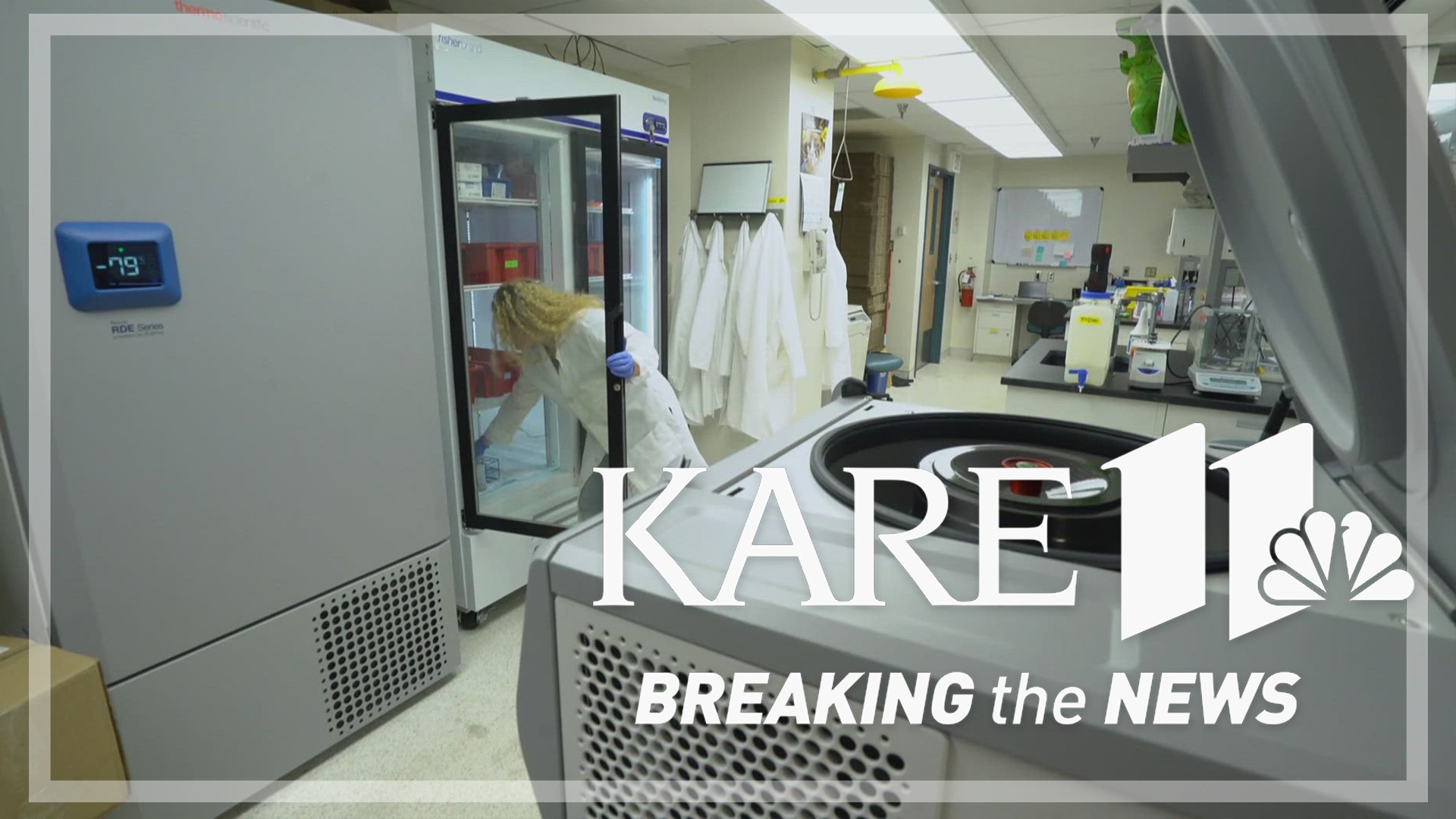MINNEAPOLIS — Wastewater testing and analysis has been measuring an increase in COVID spreading across Minnesota this month, but there has been a decrease in the number of resources that track and visualize that data.
At the end of August, the Metropolitan Council stopped updating it's COVID wastewater dashboard, which served as a weekly resource for COVID levels in the area.
The science driving the dashboard hasn't stopped, it has simply been streamlined and incorporated into a statewide network that might also soon expand to include tracking of the seasonal flu and RSV.
The changes come as a research team from the University of Minnesota is working with the Minnesota Department of Health to process all wastewater samples from more than 30 wastewater treatment plants across Minnesota.
"We work to clean it up and purify it and extract the nucleic acid we're looking for," said Shannon Champeau, a Level III researcher who has been part of the wastewater research effort ever since it began at the University of Minnesota Duluth in 2020.
Though the process for tracking COVID in wastewater has remained relatively unchanged since 2022, the way that we access that information is in the process of being upgraded. After the Met Council published it's last dashboard tracker late last month, the University of Minnesota began working to update it's statewide COVID dashboard, which is updated every Friday.
"The changes happening now will mean there is more data per region of the state," said Dr. Tim Schacker, Vice Dean of Research for the University of Minnesota Medical School. "So people can drill down a little bit more, like they did with the Met Council Dashboard."
And if you're wondering where things stand in the meantime, Dr. Tim Schacker says the data so far this week keeps heading in one direction.
"The wastewater data nationally, including our own data, suggests that this is continuing to increase," Dr. Schacker said. "Wastewater typically predicts — two weeks ahead of time — what's going to happen clinically."
Because the tracking has become so reliable, the U of M has also been working since last winter to apply the same concept to the seasonal flu and RSV.
"We found (influenza and RSV) in wastewater and we could detect it pretty easily," Dr. Schacker said. "The issue is, it wasn't at very high levels but, if you recall, we didn't have a lot of flu (last winter). Everybody had COVID and nobody was getting the flu."
But now, thanks to new work with the Minnesota Department of Health and cooperation with the CDC, the research team will soon be able to compare notes with traditional flu and RSV surveillance testing.
"It's going to take a little bit of time, just like it did with COVID," said Dr. Sara Vetter, with the MDH Public Health Laboratory. "We need to learn how levels of that nucleic acid in wastewater, correlates to disease activity that we're seeing in our communities."
Erdahl: "Realistically, how long would it be before there is a dashboard for flu and RSV?"
Dr. Schacker: "I can say it won't be long."
Erdahl: "I don't know what 'not long' means, if it means a year or not."
Dr. Schacker: "I don't think it means a year, I think means months, and we would really like to have this running by the time we get into the heavy flu and RSV season. We're a couple of months away from that and we want to be ready for it by then if at all possible."
When the time comes, there will be a team ready to make it reality.
"Having this data can actually help us as a public and as a community," Champeau said. "Make smart choices about how we move forward with illness and disease."
Watch more Breaking The News:
Watch all of the latest stories from Breaking The News in our YouTube playlist:

